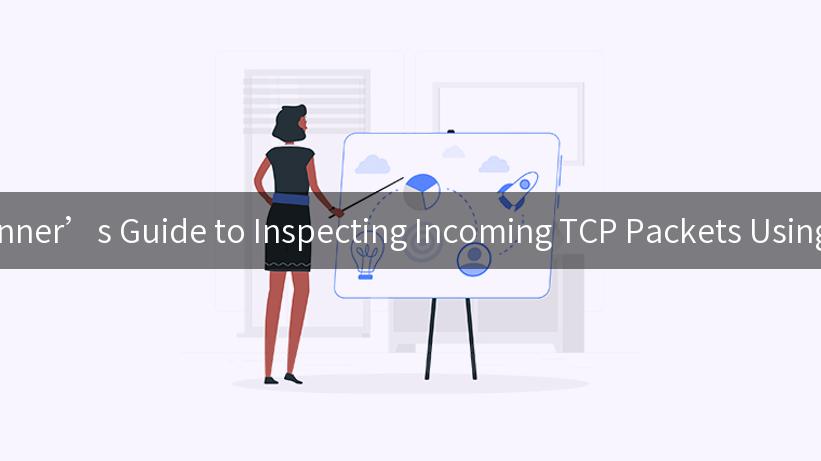
With the rapid evolution of networking technologies and the increasing complexity of systems, understanding and managing network traffic has become essential. One of the powerful tools in a network engineer’s toolkit is eBPF (extended Berkeley Packet Filter), which allows for in-depth analysis and manipulation of network packets. This guide will walk you through inspecting incoming TCP packets using eBPF, integrating it with technologies like AI Gateway, nginx, and API Documentation Management.
Understanding eBPF
eBPF is a technology that allows you to run sandboxed programs in the Linux kernel without changing the kernel source code or loading kernel modules. It is highly efficient and secure, enabling users to monitor and modify network packets directly at the kernel level. This is particularly useful for tasks such as packet filtering, performance monitoring, and debugging.
What Makes eBPF Powerful?
- Security: eBPF programs run in a restricted virtual machine, ensuring they cannot harm the system.
- Performance: Since eBPF runs in the kernel, it can process packets with minimal overhead.
- Flexibility: eBPF can be used for a wide range of applications, from networking to security and beyond.
Setting Up Your Environment
Before you dive into inspecting TCP packets, you need to set up a suitable environment. This involves installing the necessary tools and ensuring your system is ready for eBPF operations.
Required Tools
- Linux Kernel: Ensure your Linux kernel version is 4.1 or higher, as eBPF was introduced in this version.
- bcc Tools: A toolkit for BPF-based Linux IO analysis.
- clang/LLVM: Required for compiling eBPF programs.
Installation Steps
# Update and install required packages
sudo apt-get update
sudo apt-get install bpfcc-tools linux-headers-$(uname -r) clang llvm
# Clone the bcc repository
git clone https://github.com/iovisor/bcc.git
cd bcc
mkdir build
cd build
# Build and install bcc
cmake ..
make
sudo make install
Inspecting Incoming TCP Packets
Once your environment is set up, you can start writing eBPF programs to inspect incoming TCP packets. This section will guide you through a basic example of how to achieve this.
Writing an eBPF Program
eBPF programs are typically written in C and then compiled into bytecode that runs in the kernel. Below is a simple example of an eBPF program that inspects incoming TCP packets.
#include <uapi/linux/ptrace.h>
#include <net/sock.h>
#include <bcc/proto.h>
int inspect_tcp_packets(struct __sk_buff *skb) {
u8 *cursor = 0;
struct ethernet_t *ethernet = cursor_advance(cursor, sizeof(*ethernet));
if (ethernet->type != ETH_P_IP) {
return 0;
}
struct ip_t *ip = cursor_advance(cursor, sizeof(*ip));
if (ip->nextp != IPPROTO_TCP) {
return 0;
}
struct tcp_t *tcp = cursor_advance(cursor, sizeof(*tcp));
// Print packet information
bpf_trace_printk("TCP packet received: src port %d, dst port %d\n", tcp->src_port, tcp->dst_port);
return 0;
}
Loading and Running the eBPF Program
After writing your eBPF program, the next step is to load and run it. You can use bcc tools to achieve this.
# Compile the eBPF program
clang -O2 -target bpf -c tcp_inspect.c -o tcp_inspect.o
# Use bpftrace or another tool to load the program
sudo bpftrace tcp_inspect.o
APIPark is a high-performance AI gateway that allows you to securely access the most comprehensive LLM APIs globally on the APIPark platform, including OpenAI, Anthropic, Mistral, Llama2, Google Gemini, and more.Try APIPark now! 👇👇👇
Integrating eBPF with AI Gateway and nginx
Once you’ve mastered the basics of eBPF, you can integrate it with other technologies to enhance your systems further. Two such technologies are AI Gateway and nginx.
AI Gateway
AI Gateway serves as an intelligent intermediary between clients and servers, using AI to optimize and manage traffic. By integrating eBPF, you can gain insights into the performance and security of your gateway, allowing for real-time adaptations based on packet data.
How to Integrate
- Monitor Traffic Patterns: Use eBPF to monitor traffic patterns and detect anomalies.
- Enhance Security: Implement packet filtering and rate limiting based on eBPF insights.
- Optimize Performance: Adjust routing and load balancing strategies dynamically.
nginx
nginx is a popular web server that can benefit greatly from eBPF integration. By analyzing incoming packets, you can fine-tune nginx configurations and improve performance.
Steps to Integrate
- Traffic Analysis: Use eBPF to analyze incoming HTTP requests and identify popular endpoints.
- Load Balancing: Adjust load balancing strategies based on real-time traffic data.
- Security Enhancements: Implement eBPF-based filtering to block suspicious traffic.
API Documentation Management with eBPF
API Documentation Management is crucial for any enterprise offering APIs. eBPF can play a role in ensuring the quality and reliability of API traffic.
Benefits of Using eBPF
- Detailed Monitoring: Gain detailed insights into API requests and responses.
- Performance Metrics: Collect metrics on latency, throughput, and error rates.
- Security Audits: Detect and mitigate potential threats to your APIs.
Implementation Strategy
- Data Collection: Use eBPF to collect data on API usage patterns.
- Real-Time Analysis: Implement real-time analysis to detect and alert on anomalies.
- Documentation Updates: Automatically update documentation based on real-time traffic data.
Conclusion
eBPF is a powerful tool that can significantly enhance your ability to inspect and manage incoming TCP packets. By integrating it with AI Gateway, nginx, and API Documentation Management, you can optimize performance, enhance security, and gain valuable insights into your network traffic. With this guide, you’ve taken the first step towards mastering eBPF and leveraging its capabilities in your systems.
Example Table: Comparing eBPF with Traditional Packet Inspection
| Feature |
eBPF |
Traditional Packet Inspection |
| Performance |
High |
Moderate |
| Security |
High (sandboxed) |
Varies |
| Flexibility |
High |
Limited |
| Overhead |
Low |
High |
| Kernel Integration |
Yes |
No |
By understanding and applying the concepts discussed in this guide, you can harness the full potential of eBPF to enhance your network operations and system performance.